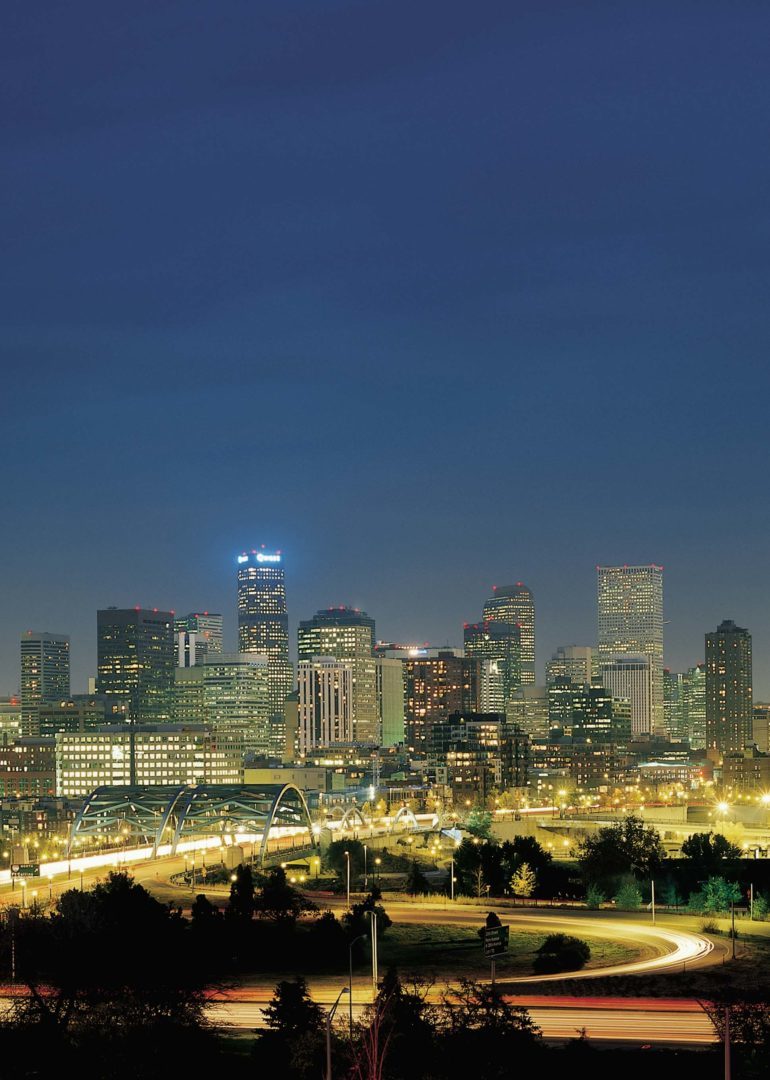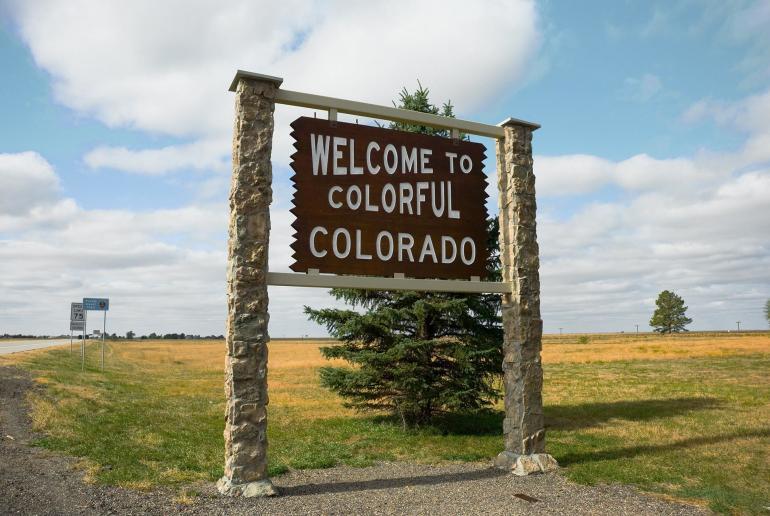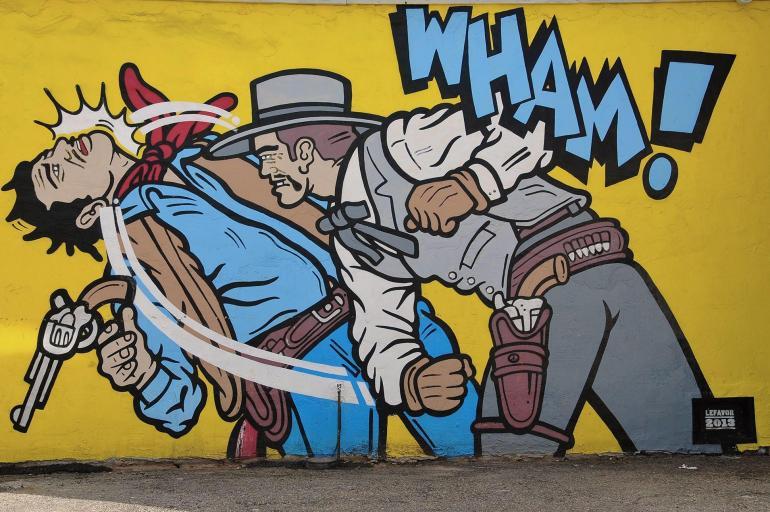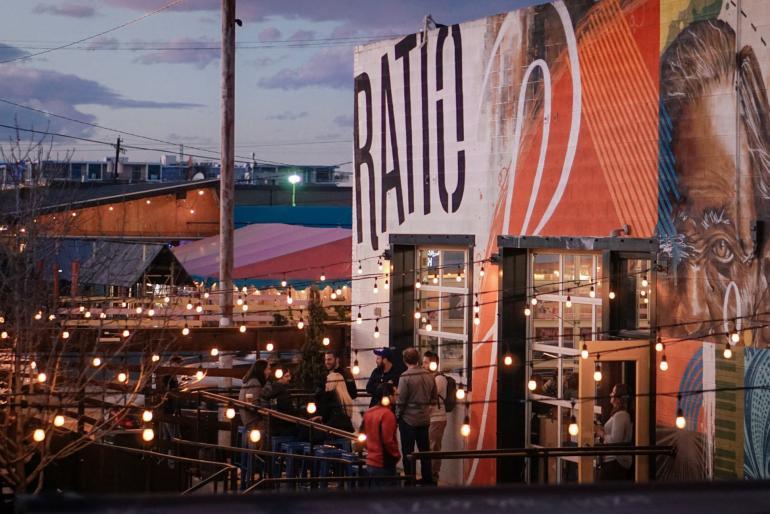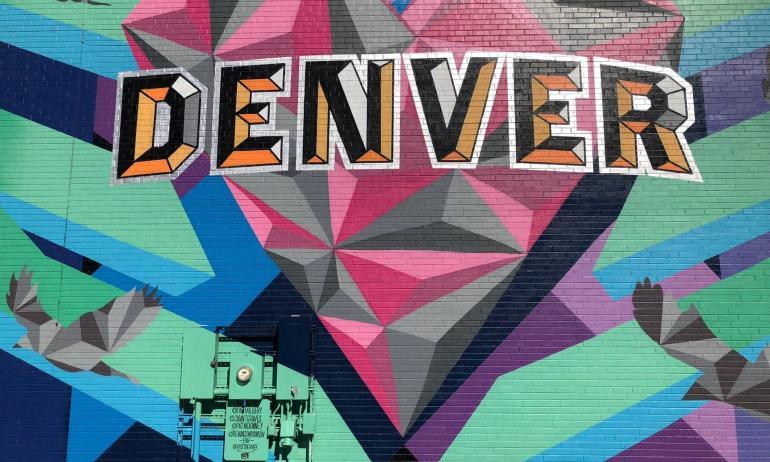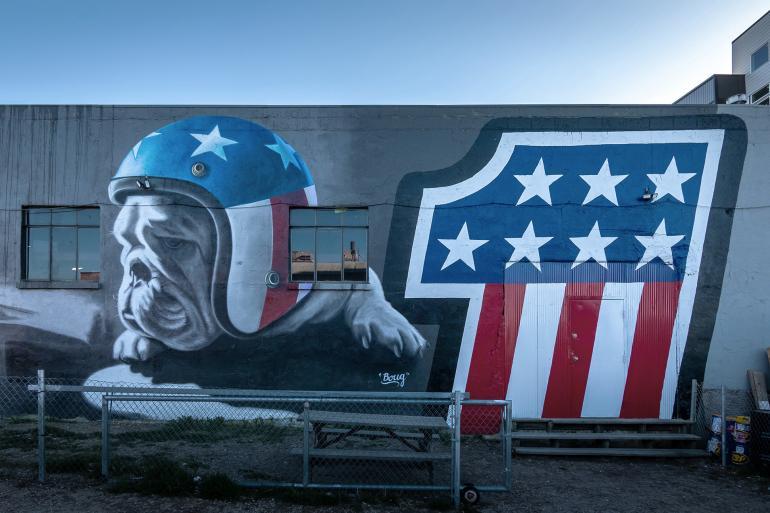Among the countless other contemporary eateries in RiNo, these three restaurants embody the evolution of the area and the city in general. Their success has not just transformed the neighbourhood’s palates, but also driven physical, economic and, most importantly, social change. Take a look at the names of the owners – Lee, Maciag, Rodriguez and Ariss. They’re enough to confirm that this is the American dream in fruition.
Back on the streets of RiNo, large industrial buildings with enormous doors, intersected by long, discrete alleyways, provide fantastic canvases for the city’s street artists. The neighbourhood has some impressive murals, created predominantly by locals. One spot in particular caught my eye – 26th and 27th streets near Larimer and Walnut. It’s been nicknamed ‘Art Alley’ and the residents will tell you that the very best examples of the city’s street art can be found here (although I spotted quite a number of pieces that I personally liked in other parts of the neighbourhood). Subjectivity aside, what I love about street art is that it captures a moment in time and I know that if I were to visit Art Alley again in a year, it would be a completely different experience.
And, just as at Booz Hall, many creative enterprises have popped up to complement the burgeoning scene here, so much so that the area has been awarded the moniker RiNo Art District, with the tagline ‘Where Art is Made’. Who says you can’t commercialise something organic. There are walking tours in the neighbourhood dedicated purely to street art and among the number of new contemporary galleries are Weilworks and ATC DEN.
Each September, the CRUSH (Creative Rituals Under Social Harmony) festival takes place, celebrating talented street artists and showcasing their work on RiNo’s sprawling walls. Founded by Denver graffiti aficionado Robin Munro, it’s just had its eighth anniversary and is now Colorado’s largest independent art project, bringing in admirers from far and wide.
Street art is emblematic of any hipster hood, but across the city I notice that art is openly embraced by the residents. Public art is something of a passion in Denver. By way of city ordinance, 1 percent of any capital construction project over a million dollars must go towards funding public art, which is fantastic.
Beyond RiNo, I spot monumental pieces of artwork in public spaces, some of which have become iconic symbols of the city: the late Lawrence Argent’s giant 40ft-tall blue bear called ‘I See What You Mean’, for instance, and Jonathan Borofsky’s ‘Dancers’, which is permanently installed outside the Denver Center for the Performing Arts. There are in total more than 300 pieces of public artwork in the city.
I’m a big believer in publicly accessible art. It engenders pride and ownership in the local community and invigorates the built-up environment to create an important sense of identity. It encourages people to think more deeply about the spaces they occupy, stimulating consideration for our interconnected lives. It also prompts reflection about the social sphere as a whole.
I’ve often deliberated about what it is that makes a city great, particularly in times when destinations are becoming ever-more homogenous. Some say that a successful city is one that is growing economically – by human and financial capital. Others trade on the intangible – what makes a city hip or cool socially. I would say that a great city is one that is extraordinary for a mix of reasons – independence, confidence, resilience and determination.
Denver is one such city. And from what I’ve learnt, it comes naturally and has existed since its founding. True, it’s not New York, nor is it San Francisco, but it’s cosmopolitan nevertheless – leftist, progressive, diverse and tolerant. These are values I admire and look for in a destination, particularly in today’s increasingly worrying political climate.
But more than this, Denver is charming and charismatic. It is a city that wears its creative energy proudly on its sleeve. It’s a place where socially progressive creators have an almost fearless devotion to free-spirited individualism and entrepreneurism. It’s a city that plays to its own standards, that refuses to conform to conventional rules. Yet, despite being free-spirited, it is a city that is inherently ambitious, as well as being living proof that the two things can co-exist.
For more about the Mile High City, visit www.denver.org. To explore the rest of this diverse state, check out www.colorado.com.
Photography courtesy of Colorado Tourism, Visit Denver, Davel5957, Richard Dusseau and Matthew Irving
Get out there
Do…
… go on a scooter tour with Scootours, whose motto is ‘Cuter on a Scooter’. It’s a lot of fun and a great way to get your bearings in the city. You’ll need a driving licence to ride one, though.
… pick up a snap-button Western shirt at Rockmount Ranch Wear, where they were first invented.
… get out to Red Rocks Amphitheatre for a show when you’re in town. It’s a spectacular experience. We heard local band OneRepublic play there and it was mindblowing.
Don’t…
… just stay in RiNo. Denver is a very accessible city and there are other great neighbourhoods to check out, such as Lower Downtown and Cherry Creek. The area around Union Station has become a big food and drink hub.
… forget to take it to the road. There are many great sights to see just under an hour from Denver – Central City, Black Hawk and the Mount Evans Scenic Byway among them.
… leave the state of Colorado with any marijuana products. As tempting as that may be.


